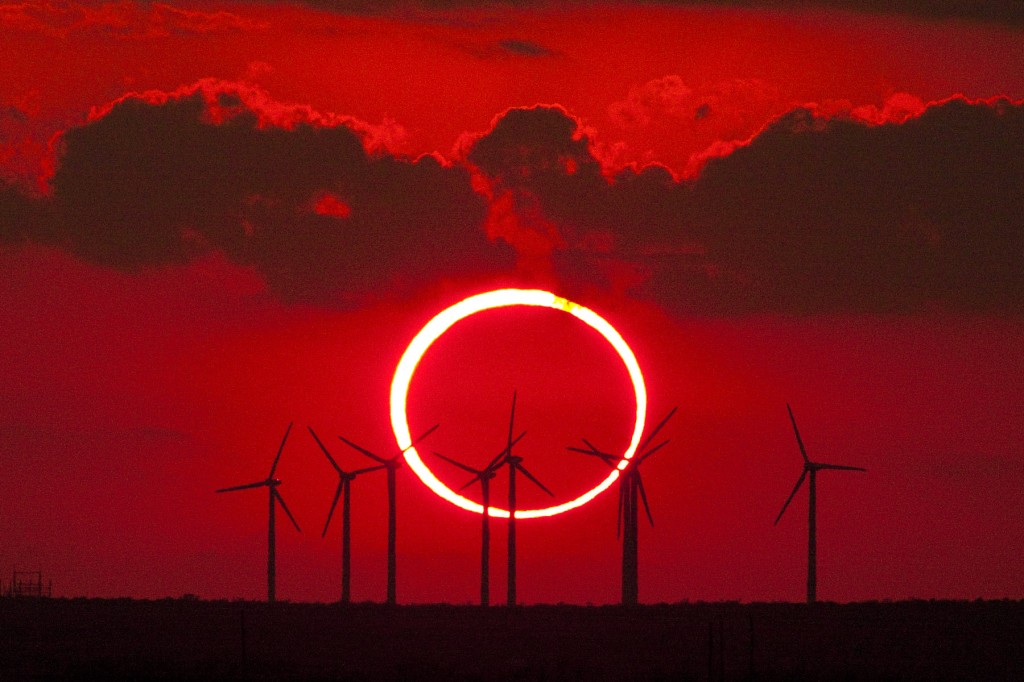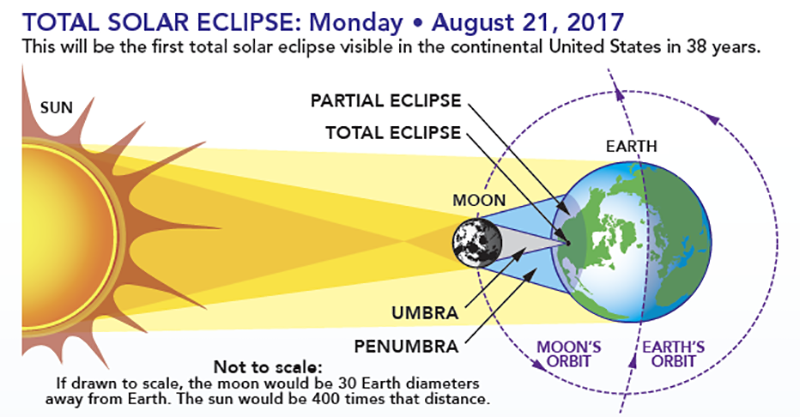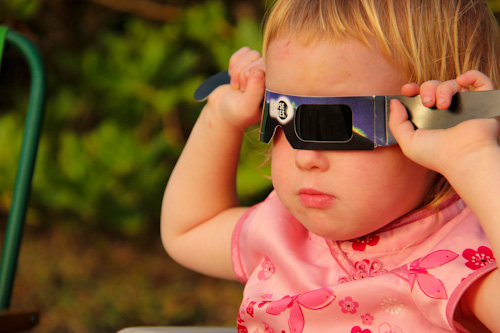2017 Total Solar Eclipse!
WHAT IS A SOLAR ECLIPSE?
A solar eclipse is a natural phenomenon that occurs when the moon passes between the sun and the Earth. As the moon passes between the two bodies, it blocks the light of the sun and casts a shadow on the Earth.
There are three types of solar eclipse: total, partial, and annular.
A total solar eclipse happens when the Earth, the moon, and the sun align perfectly. The moon blocks a large surface area of the sun and the sky becomes dark. Total solar eclipses can be viewed only from a small area on Earth by people who are in the center of the moon’s shadow.
A partial solar eclipse happens when the Earth, the moon, and the sun align imperfectly. The moon blocks a smaller surface area of the sun and thereby eclipses it partially.
An annular solar eclipse happens when the Earth, the moon, and the sun align while the moon is at its farthest distance from the Earth. Since the moon is closer to the sun, it cannot block it entirely. Instead of a total darkening of the sky, the sun casts a ring of light around the moon.
(Flint Wild, “What is an Eclipse?”, nasa.gov, 2017)
MONDAY’S SOLAR ECLIPSE
Monday’s eclipse will be a total solar eclipse. However, not everyone who sees the eclipse will experience it as such. The “path of totality” is a 70-mile-wide span that runs from Lincoln Beach, Oregon to Charleston, South Carolina. For those who are within the path of totality, they will be able to see the total eclipse, which lasts for roughly two minutes and forty seconds. For those who are outside the path of totality, they will be able to see a partial eclipse of the sun.
Fun Fact: While solar eclipses occur every eighteen months, the United States last experienced a total solar eclipse 38 years ago in 1979!
WHEN TO SEE IT?
New Jersey Audiences Massachusetts Audiences
Start of Eclipse: 1:22pm Start of Eclipse: 1:29pm
Maximum Eclipse: 2:44pm Maximum Eclipse: 2:47pm
End of Eclipse: 4:00pm End of Eclipse: 4:00pm
HOW TO SEE IT?
Safety is important when looking at the sun. No one wants to be blinded by the light. Our guess is you’ve heard about solar eclipse glasses. These are ISO 12312-2 compliant shades that block sunlight better than the average pair of sunglasses. If you’re looking to pick some up for the family, check with local science museums, schools, public libraries, and home improvement centers. If you turn up empty, you can ask for ISO 12312-2 compliant shades or see whether a neighbor has any extra pairs.
As most readers of this blog will experience a partial solar eclipse, it is important to wear your eclipse shades for the duration of your viewing. For those viewing the eclipse from within the path of totality, it is safe to remove the shades during the two-minute totality period. Otherwise, shades should be worn at all times.
To learn more about the solar eclipse, visit www.eclipse2017.nasa.gov.
Don’t forget to share your photos with us on the Remyndr Facebook Page. We’d love to hear about your experience!
Have fun at the 2017 total solar eclipse!




No Comments